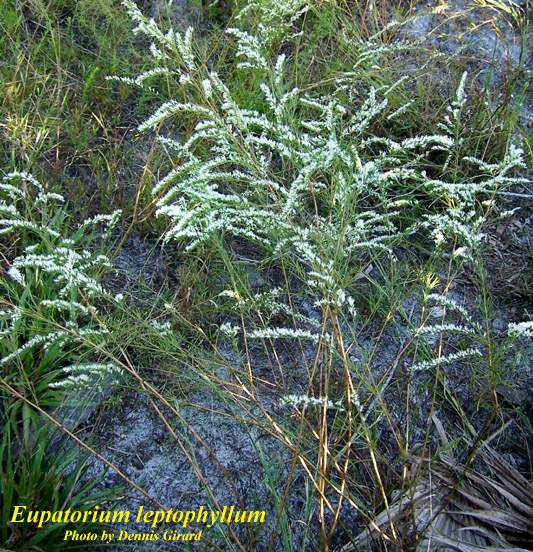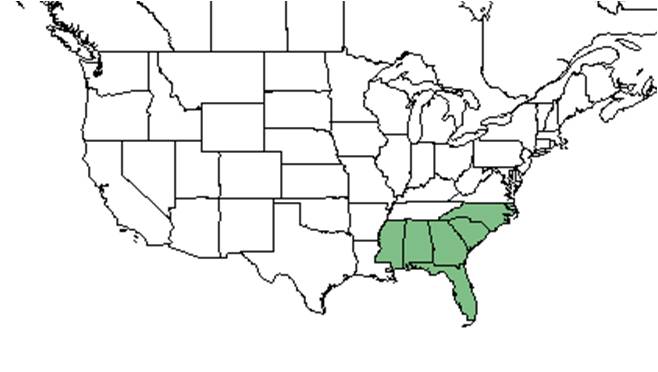Difference between revisions of "Eupatorium leptophyllum"
KatieMccoy (talk | contribs) |
|||
| Line 3: | Line 3: | ||
{{taxobox | {{taxobox | ||
| name = Eupatorium leptophyllum | | name = Eupatorium leptophyllum | ||
| − | | image = | + | | image = Eupa_lept.jpg |
| − | | image_caption = | + | | image_caption = Photo by Dennis Girard, [http://www.florida.plantatlas.usf.edu/Plant.aspx?id=1007 Atlas of Florida Vascular Plants] |
| regnum = Plantae | | regnum = Plantae | ||
| divisio = Magnoliophyta - Flowering plants | | divisio = Magnoliophyta - Flowering plants | ||
Revision as of 14:15, 27 January 2016
| Eupatorium leptophyllum | |
|---|---|

| |
| Photo by Dennis Girard, Atlas of Florida Vascular Plants | |
| Scientific classification | |
| Kingdom: | Plantae |
| Division: | Magnoliophyta - Flowering plants |
| Class: | Magnoliopsida - Dicotyledons |
| Order: | Apiales |
| Family: | Apiaceae ⁄ Umbelliferae |
| Genus: | Eupatorium |
| Species: | E. leptophyllum |
| Binomial name | |
| Eupatorium leptophyllum DC. | |

| |
| Natural range of Eupatorium leptophyllum from USDA NRCS Plants Database. | |
Common name: false fennel
Contents
Taxonomic notes
The genus Eupatorium honors a first century Greek king who discovered an antidote to a poison derived from this family[1].
Description
A description of Eupatorium leptophyllum is provided in The Flora of North America.
It is a short lived perennial with glabrous stems that reaches around 1 to 2 meters tall [2]. The young stems have few hairs and the leaves are finely divided[3].
Ecology
Habitat
It is found in wet areas, shallow water and at the edges of ponds [2].
Pollination
The following Hymenoptera families and species were observed visiting flowers of Eupatorium leptophyllum at Archbold Biological Station (Deyrup 2015):
Halictidae: Lasioglossum nymphalis, L. placidensis
Photo Gallery
References and notes
Deyrup, M.A. and N.D. 2015. Database of observations of Hymenoptera visitations to flowers of plants on Archbold Biological Station, Florida, USA.